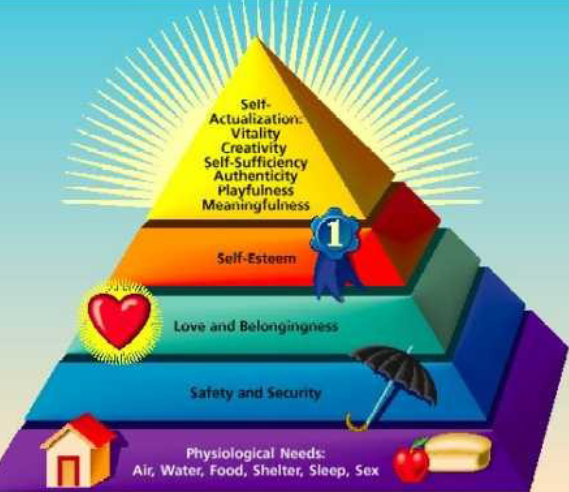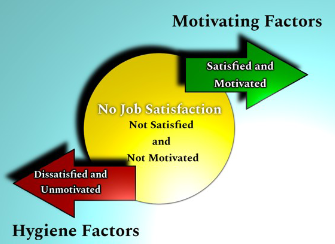Thanatology - Psychology - Chapter 0
1/71
There's no tags or description
Looks like no tags are added yet.
Name | Mastery | Learn | Test | Matching | Spaced |
|---|
No study sessions yet.
72 Terms
Psychology
Scientific study of behavior and mental processes.
Behavioral Psychology
Concerns itself with outward behavior of animals and people, and not what is unobservable in their minds. Behavior can be described scientifically without recourse either to internal physiological events or to thoughts and beliefs.
Clinical Psychology
Understand and treat deviant behavior.
Cognitive Psychology
To a Cognitive Psychologist, all behavior is based upon the internal mental processes, which if understood would explain the behavior.
Counseling Psychology
• Origin and consequences of thoughts
• The training and education required for a Counseling
Psychologist and a Clinical Psychologist is nearly identical therefore some believe these two fields are interchangeable.
Developmental Psychology
Primarily this field focuses on children and include areas such as language development, thinking skills and emotions.
Educational Psychology
The goal of educational psychology is to improve education.
Industrial (Organizational) Psychology
Scientific study of employees, workplaces, and organizations.
Social Psychology
Study of how people’s thoughts, feelings, and behaviors are influenced by the actual, imagined, or implied presence of others.
Experimental
Work done by those who apply experimental methods to the study of behavior and processes that underlie it.
Psychobiological (Behavioral Neuroscience)
Application of Principles of biology to the study of
physiological, genetic, and developmental mechanisms of behavior in human and non-human animals.
Abnormal
Study of unusual patterns of behavior, emotion, and thought which may, or may not, be understood as precipitating a mental disorder.
Grief
Study of those who have experienced loss.
Structuralism
• Reduce to basic parts
• School of thought that is concerned with reducing experience to its basic parts, determining the laws by which the parts are synthesized and investigating the structure and content of mental state by introspection
Functionalism
• Focuses on the function of a behavior
• School of thought which proposed that the function, not the structure, of the conscious experience should be studied
Behaviorism
• Focuses on the Behavior
• School of thought that view learning as the most important aspect of an organism’s development. Seeks to objectively measure behavior and the way in which stimulus-response relationships are formed
Cognitive
• Focuses on internal mechanisms of the mind
• School of Psychological thought in which the simplest matters are studied such as perception of objects, attention, pattern recognition, etc.
Psychoanalytic
• Brings unconscious processes to conscious
• Makes it possible to resolve conflicts which usually date back to early childhood experiences
Humanistic
• Focuses on the individual
• A school of thought that emphasizes the uniqueness of the individual and the search for self-actualization
Biological
• Focuses on the brain and chemicals
• All behaviors are traced to the biological functions of the brain. Most of our behaviors are therefore caused by the chemicals in our body.
Physiological
• How the body functions and we survive
• Studies the neural mechanisms of perception and behavior through direct manipulation of the brains of nonhuman animal subjects in controlled experiments
Sociocultural
• Focuses on behavior towards others
• School of thought that is concerned with how one interacts with society and how society and the culture impact a person.
Psychologist
• Ph.D.
• Not M.D.s
Psychiatrist
• M.D.
• Completed specialized training in the field of mental health, such as a psychiatric residency.
Psychoanalyst (Psychoanalysis)
Believes in theories of personality developed by Freud that focuses on repression and unconscious forces and includes the concepts of infantile sexuality, resistance, transference, and division of the psyche into the id, ego, and superego.
Psychotherapy
Category of methods for treating psychological disorders in which the primary technique is conversation between patient and therapist.
Motivation
The process that initiates, directs, and sustains behavior
satisfying physiological or psychological needs.
Primary (Biological)
Hunger/Food
Stimulus
Internal needs for cognitive, physical, and emotional
stimulation & extrinsic/intrinsic rewards
Learned
Motives acquired through reward and punishment &
observation of others.
Instinct Theory
• Biological approach to motivation
• Emphasizes the inborn, automatic, involuntary, and
unlearned processes which control and direct human behavior
• Has been abandoned, but is a solid framework for those who believe in natural selection and survival of species
Drive Reduction Theory
Centers on homeostasis or equilibrium by adjusting oneself everyday
Drive for thirst causes us to drink and then the thirst is
reduced.
Primary Drives
• Unlearned, basic physiological needs
Secondary Drives
• Learned, non-biological needs that prompt action like a primary drive
Arousal Theory
Person is driven to achieve his/her optimum level of arousal, acting in ways that will increase this level when too low and decrease when too high.
Peak performance of tasks is associated with moderate
levels of arousal.
• Difficult tasks are best performed at moderate arousal levels (nervousness may cause an individual to freeze)
• Easy tasks can be performed at high arousal levels
Approach Approach Conflicts
Person must choose between two desirable activities that cannot both be pursued
Avoidance Avoidance Conflicts
Nether choice in a situation is considered acceptable and one must choose the lesser of two evils
Approach Avoidance Conflicts
One event or activity has both positive and negative features
Multiple Approach Avoidance Conflicts
Two or more alternatives, all of which have positive and negative features.

Maslow's Hierarchy of Needs
Maslow believed that each individual had 5 distinct levels
of needs. Each individual would begin by fulfilling the
needs of the first level (physiological needs - air, food,
water),and then progress to the next set of needs. As each level of needs is met, the individual begins working to satisfy the next higher level, until self-actualization is
achieved.

Herzberg's Two Factor Theory
Hertzberg believed that there were factors that governed
human motivation (Maintenance and Motivational) If the
Maintenance goals are not achieved, the employee
(individual) would experience a level of dissatisfaction.
Once the Maintenance goals are achieved, the employee can work toward the Motivational goals which cause the individual to excel in the given area.
McGregor's Theory X and Theory Y
• McGregor believed that employers or supervisors use one of 2 different motivational styles. For progress to be made, the motivational style of the employee must be matched by the motivational style of the employer.
• The 2 theories (styles) of management are Theory X and Theory Y.
• Theory X believes employees are lazy and only concerned for money.
• Theory Y believes that employees will excel if given the right environment and opportunities.
Theory Z
• This motivational theory began in Japan and is an
extension of Theory Y.
• It states that employees are more motivated if they actively participate in decision-making at ALL levels of the organization. US Companies have begun to follow the lead of the Japanese and now have Quality Teams, and Employee participation in management.
Equity Theory
This theory states that people are motivated by past
experience of the amount of reward given for effort put
forth. That is to say, if an employee works extremely hard
but receives a reward equal to those that put little effort
into the project, that employee will not work as hard in the future
Expectancy Theory
The Motivation to accomplish a certain task is linked to the probability of receiving the reward when the task is
complete.
Drive Theory
According to this theory, biological needs arising within
our bodies create unpleasant states that lead us to
behaviors to eliminate those states (feelings). An example of this is being thirsty and getting a drink.
Arousal Theory
A theory of motivation suggesting that human beings seek an optimal level of activation (desire), not minimal levels of desire. An example is if you are a creative person who loves to knit, you will be driven to produce a perfectly knitted product. The desire to be the best we can be.
Human Motives
• Hunger and Thirst
• Sensation seeking
• Sex
• Need for achievement
• Aggressive Motivation
• the desire to harm or injure others in some manner.
• This motivation is the most dangerous. It results in events such as terrorist attacks, wars, murders, and other undesirable activities.
Emotion
• Emotions are reactions consisting of subjective cognitive states, physiological reactions, and expressive behaviors.
• Emotions are very personal and may be very private. No one, no matter how intimate we are to them, can truly share our subjective inner experiences. Others can get an idea of how we are feeling (our emotions) by looking at our expressions and non-verbal communication.
Memory
• Stages of Memory
• Encoding
• Writing
• Storage
• Retaining over long periods
• Retrieving
• Recalling
• Repression
• a defensive mechanism relating to memory if the memory is too painful
Psychoanalytic Theory
• developed by Sigmund Freud
• This theory believes that consciousness and therefore
Personality have 3 levels:
Ego
the mostly conscious state of thoughts and perceptions, that serves as the mediator between the Superego and the Id.
Superego
The Mostly Preconscious state of memories and stored
knowledge, that has the ideals, morals, and conscience that you incorporated from your parents
Id
The unconscious state of fears, irrational wishes, immoral urges, violent motives, and unacceptable desires, that is the pleasure seeker of the mental processes.
Freudian slips
Freudian slips are the errors in speech that in fact betray
unconscious thoughts or impulses.
Ego Defense Mechanisms
• When the Ego feels it is unable to control the impulses from the id, it (and the individual) experience anxiety.
• To reduce such feelings, the ego uses various defenses
mechanisms.
Repression
Blocking
Projection
Seeing feelings/emotions/behaviors in others that you are exhibiting
Reaction formation
• defensive mechanism by which people behave in a way
opposite to what their true but anxiety-provoking feelings
would dictate.
• Example: is a competitive athlete who chooses to sit out a game, match, or meet to prevent a potentially disheartening
failure.
Regression
Going back to a more simple state/place
Denial
Rejecting events occurred
Displacement
Redirection to others
Sublimation
Where socially unacceptable impulses or idealizations are consciously transformed into socially acceptable actions or behavior, possibly resulting in a long-term conversion of the initial impulse
Rationalization
Supplying logic to the impulse to justify behavior
Trait Approach to Personality
• The question has long been whether our personality comes from our heredity or from our environment or both.
• If it comes only from heredity. then we are never able to change our personality.
• If it comes only from environment. then why do siblings who are raised in the same environment have different personalities?
Social Behavior
The way people get along in groups conveys a great deal about the personality, emotions and feelings of people.
Types of social behaviors
• Social Comparison
• a member of the group compares him/herself to others in the group.
• Conformity
• Obedience
• Aggression
• Prejudice
• Leadership
• Some may experience Social facilitation
• That is the group actually brings about a result the person could not have had on his/her own.
Attachment Theory
It is generally accepted that there are three types of
attachment that one can experience:
Secure
• Loving childhood, well cared for
• Do not avoid people
• Do not feel need to be constantly dependent on other people
Avoidant
• Constantly denied any physical contact by mothers
• Consistently express behavior of detachment
Anxious/Ambivalent
• Had mothers that were slow or inconsistent to respond to child’s cries
• Express feelings of protest
• Very distrustful of others
The “Baby” situation
• Crying is a normal response by secure children.
• When a mother picked up a child, child would stop crying and then look forward to explore.
• Anxious/Ambivalent would continue to cry even when
mother comforted them.
• Avoidants would not have any emotional response when the mother left, not would they be affected when they returned.